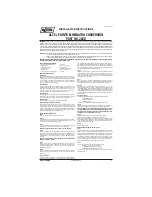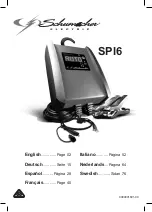
1-7
01
VEHICLE MODIFICATIONS
This vehicle should not be modified. Modification of your vehicle could affect its perfor-
mance, safety or durability and may even violate governmental safety and emissions
regulations.
In addition, damage or performance problems resulting from any modification may not
be covered under warranty.
If you use unauthorized electronic devices, it may cause the vehicle to operate abnor-
mally, wire damage, battery discharge and fire. For your safety, we recommend that you
do not use unauthorized electronic devices.
VEHICLE HANDLING INSTRUCTIONS
As with other vehicles of this type, failure to operate this vehicle correctly may result in
loss of control, an accident or vehicle rollover.
Specific design characteristics (higher ground clearance, track, etc.) give this vehicle a
higher center of gravity than other types of vehicles. In other words they are not de-
signed for cornering at the same speeds as conventional 2-wheel drive vehicles. Avoid
sharp turns or abrupt maneuvers. Again, failure to operate this vehicle correctly may
result in loss of control, an accident or vehicle rollover. Be sure to read the “Reducing the
risk of a rollover” driving guidelines, in section 6 of this manual.
VEHICLE BREAK-IN PROCESS
By following a few simple precautions for the first 1,000 km (600 miles) you may add to
the performance, economy and life of your vehicle:
• Do not race the engine.
• While driving, avoid sudden acceleration.
• Do not maintain a single speed for long periods of time, either fast or slow.
Varying engine speed is needed to properly break-in the engine.
• Avoid hard stops, except in emergencies, to allow the brakes to seat properly.
• Don’t tow a trailer during the first 2,000 km (1,200 miles) of operation.
• Fuel economy and engine performance, engine oil consumption may vary depending
on vehicle break-in process and be stabilized after driving about 6,000 km (4,000
miles). New engines may consume more oil during the vehicle break-in period.













































